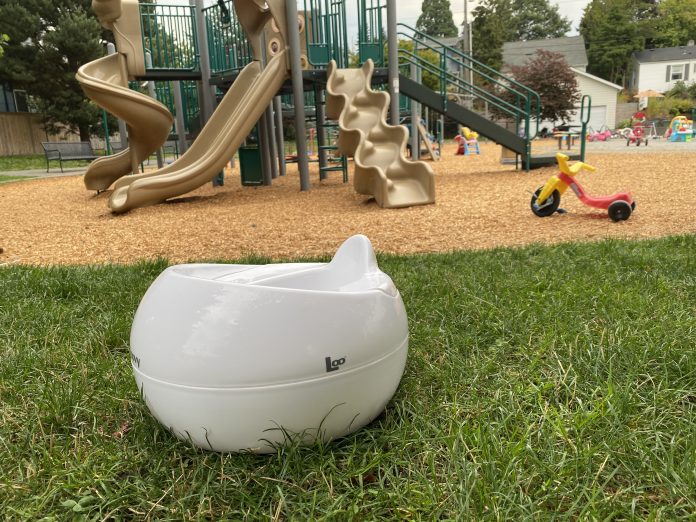Seattle is a “you are on your own” city — not a city that cares for vulnerable residents, especially our youngest kids.
The average out-of-pocket cost for a birth in Seattle is almost $3,000 after insurance coverage. If you have Apple Health, then you are covered. But if your income is $85,000 — which barely provides for the essentials for a family of three — you are on your own for this payment.
In Finland and Scotland every newborn gets a baby box, filled up with clothing, a mattress and fitted sheet to turn the box into a bed, blankets, a bath towel, washcloths, bibs, and a digital thermometer. This provides a good start for all babies. Baby boxes in Finland are associated with a significant drop in infant mortality. Indeed, Finland has the lowest infant mortality rate among wealthy countries.
Back in the U.S., without the public and universal provision of these baby boxes and other social safety net provisions, you and your baby are on your own.
In Washington state, we do have a distinct and crucial benefit that we did not have 40 years ago. That’s paid family and medical leave. Moms can take up to 18 weeks, and dads up to 12 weeks. We are a leader in our country for this benefit, but we still fall far behind most other democracies, which typically have one year of paid leave after the birth of a child.
However, in Seattle and across the state, if you have not worked 820 hours in the past year, you do not get paid leave. Which means if you are a college student working 15 hours a week, you are shut out of paid leave. The message for these student-worker-moms: you are on your own.
When paid family leave ends, parents scramble for child care. And that is when the low pay of child care teachers collides with the tens of thousands of dollars required for tuition. Unlike K-12 education, policy makers have chosen to back and fill a private child care system, which pretty much leaves everyone in the lurch.
Mayor Bruce Harrell would have you believe that the proposed Families and Education Levy will remedy this, with 5,000 child care teachers gaining annual bonuses of $500. That’s equivalent to a 25 cent hourly raise. It is not a raise, it is an insult. If we in Seattle were serious about creating a career in which child care teachers can thrive, we would at the very least propose an ongoing and permanent wage boost of $3 an hour. Without this, child care workers will be, as they are now, on their own.
How about the parents and the finances of child care? Seattle already has a pre-K program, with a sliding tuition scale so that if your household income is $100,000, your child gets free pre-K. If your income, with a three-person household, is $150,000, you would pay about $6,000.
If we expanded this program to before and after school, made all kids eligible, included summer camp and added on infant and toddler care, the annual cost would be $150 million. Without this expansion, the majority of Seattle’s kids and their parents are on their own.
Adding up birth expenses, baby boxes, child care worker compensation, child care, pre-kindergarten, before- and after-school care, and summer school, we need somewhere at least $400 million a year in increased funding. Some of these expenses might have been offset in the past by city and state child care subsidies for low income kids, Head Start (which the Trump administration is cutting), early ECEAP, which is the state’s inadequate version of Head Start (and which the Ferguson Administration cut), and an expansion of kids qualifying for ECEAP (which has been frozen by the state legislature).
So we need hundreds of millions of dollars in new funding… Is that a problem in the fourth wealthiest metropolis in the United States? Why not just pass the $1.3 billion six-year (that’s $200 million a year) family and education levy and be done with it?
While the Mayor’s rhetoric is all about making “every child ready to start kindergarten by investing in affordable, high-quality early learning opportunities,” the reality is that it funds only half of what kids in Seattle need. It leaves out half of four year olds from pre-kindergarten, it does nothing for before- and after-school care, it fails to provide for summer camp, it provides child care, on a first-come first-serve basis, only for kids well below the median income, and it insults child care workers with a 25-cent raise.
This is why Democrats fail: they claim a policy helps workers and the middle class, and then the income boundaries exclude these very workers. They claim something like the Family and Education Levy will enable all young children to thrive and their parents to survive, when the income qualifications leave the majority out. A true democratic policy would be universal and inclusive… and expensive.
Of course the affluent and the oligarchs and corporate monopolists will oppose any taxes that they would pay to fund a city for our kids. And the mainstream Democrats will search for a compromise that undermines the promise of universal advancement, and then congratulate themselves with their ability to compromise (bow to) the powerful elite.
That approach does not work any more, if it ever did. In the Trump era, we must build our own assertive universal commonwealth for hope and progress.
It is time to put aside Seattle nice, to throw into the trash heap the “you are on your own” mantra that embeds false hopes and promises, and get down to the brass tacks of taxing the wealthy. A tax on the wealthy by itself would be a good thing. The wealthy corrupt the market and undercut the politics of our city. They build palaces of extravagance. They starve public services and cordon off regular people from what would have been the benefits of these public services.
Taxing wealth to fund care infrastructure sends a clear message: none of us are on our own. We in Seattle are building a future for all of us. We are creating a city for our kids – all of them.

John Burbank (Guest Contributor)
John Burbank founded the Seattle-based Economic Opportunity Institute in 1998 and led it until his retirement in 2021.

